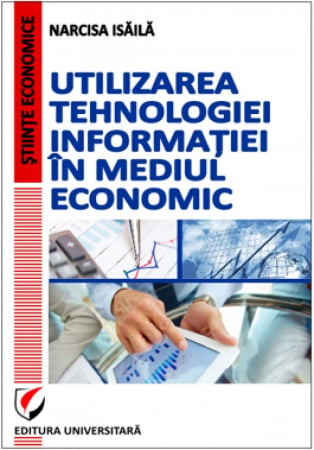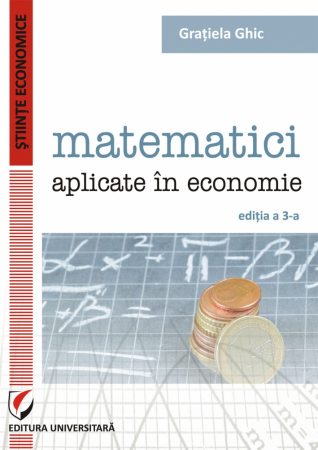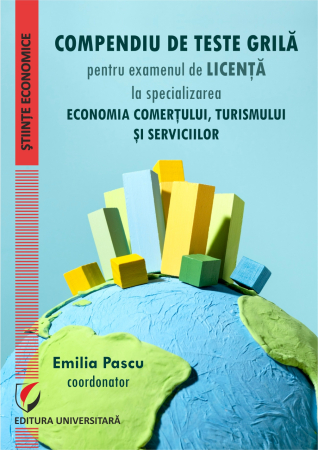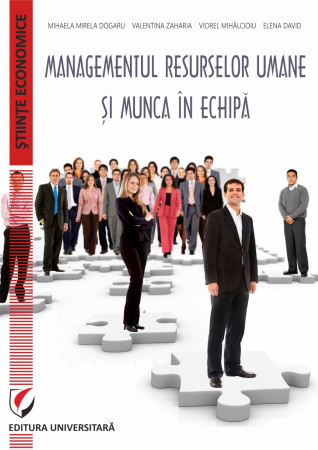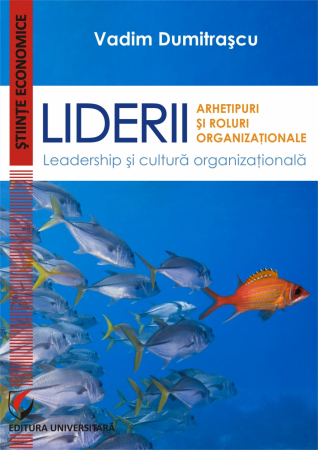Manuscript proposals: [email protected] / 0745 204 115 //// Tracking orders Individuals / Sales: 0745 200 357 / Orders Legal entities: 0721 722 783
ISBN: 978-606-28-0541-8
DOI: 10.5682/9786062805418
Publisher year: 2017
Pages: 206
Publisher: Editura Universitară
Author: Camelia Pavel
Product Code:
9786062805418
Do you need help?
0745 200 357
- Description
- Download (1)
- Authors
- Content
- More details
- Reviews (0)
This paper was built around the main promotional techniques used by organizations, regardless of their size.
The paper is structured in seven chapters, each of which deals with a distinct part of promotional communication.
Although it is not intended to be an exhaustive work in the field of promotional techniques, but only a synthesis of concepts and fundamental tools specific to promotion, the chapters have been organized so that the reader can read separately the information specific to a topic of interest. However, the paper was thought of in its unity, establishing from one chapter to another and within the same chapter a logical chain of concepts and arguments used.
The paper is structured in seven chapters, each of which deals with a distinct part of promotional communication.
Although it is not intended to be an exhaustive work in the field of promotional techniques, but only a synthesis of concepts and fundamental tools specific to promotion, the chapters have been organized so that the reader can read separately the information specific to a topic of interest. However, the paper was thought of in its unity, establishing from one chapter to another and within the same chapter a logical chain of concepts and arguments used.
-
Promotional Techniques. Theoretical and Practical Approaches
Download
CAMELIA PAVEL
ARGUMENT / 8
1. PLACE AND ROLE OF PROMOTION IN MARKETING POLICY / 11
1.1. Promotion - marketing tool / 11
1.1.1. Conceptual delimitations of promotion / 11
1.1.2. Content of the promotion / 13
1.2. Components of the communication process / 14
2. PERCEPTION AND PROMOTIONAL COMMUNICATION / 28
2.1. Defining perception / 28
2.2. Selective perception / 29
2.2.1. Selective exposure / 29
2.2.2. Selective attention / 30
2.2.3. Selective distortion / 31
2.2.4. Selective retention / 31
3. PROMOTIONAL MIX / 32
3.1. Definition and structure of the promotional mix / 32
3.2. The nature of the components of the promotional mix / 33
3.3. Factors influencing the structure of the promotional mix / 36
4. ADVERTISING / 44
4.1. Definitions of advertising / 44
4.2. Advertising characteristics / 45
4.3. Advertising functions / 47
4.4. Typology of advertising services / 48
4.5. Advertising and media - an indispensable association / 52
4.5.1. Media advertising / 53
4.5.1.1. Written press / 54
4.5.1.2. Radio / 64
4.5.1.3. Television / 66
4.5.1.4. The cinema / 69
4.5.2. Printing advertising / 70
4.5.2.1. Poster / 71
4.5.2.2. Catalog / 71
4.5.2.3. Leaflet, leaflet and brochure / 73
4.5.2.4. Golden pages / 74
4.5.3. Out-of-home advertising / 75
4.5.3.1. Outdoor advertising / 76
4.5.3.2. Indoor advertising / 122
5. SALES PROMOTION / 124
5.1. Conceptual approaches to sales promotion / 124
5.2. Characteristics of sales promotion / 126
5.3. Classification of sales promotion techniques / 128
5.3.1. Techniques whose support is the product or brand that is the subject of the promotion / 128
5.3.1.1. Temporary price reductions / 128
5.3.1.2. Premiums and promotional gifts / 135
5.3.1.3. Promotional games and contests / 138
5.3.1.4. Free trial operations / 140
5.3.2. Techniques for showcasing products at the point of sale / 145
5.3.2.1. Merchandising techniques / 145
5.3.2.2. Advertising at the point of sale / 150
6. PUBLIC RELATIONS / 152
6.1. Definition and content of public relations / 152
6.2. Typology of public relations campaigns / 154
6.3. Techniques specific to public relations activities / 183
6.3.1. Sponsorship / 185
6.3.1.1. Dimensions of sponsorship / 185
6.3.1.2. The main fields of application of sponsorship / 186
6.3.2. Patronage / 188
7. SALES FORCES / 191
7.1. Definition and objectives of sales forces / 191
7.2. Organization of sales forces / 194
7.2.1. Types of sales force organization / 195
7.2.2. Fixing sales territories / 197
BIBLIOGRAPHY / 201
1. PLACE AND ROLE OF PROMOTION IN MARKETING POLICY / 11
1.1. Promotion - marketing tool / 11
1.1.1. Conceptual delimitations of promotion / 11
1.1.2. Content of the promotion / 13
1.2. Components of the communication process / 14
2. PERCEPTION AND PROMOTIONAL COMMUNICATION / 28
2.1. Defining perception / 28
2.2. Selective perception / 29
2.2.1. Selective exposure / 29
2.2.2. Selective attention / 30
2.2.3. Selective distortion / 31
2.2.4. Selective retention / 31
3. PROMOTIONAL MIX / 32
3.1. Definition and structure of the promotional mix / 32
3.2. The nature of the components of the promotional mix / 33
3.3. Factors influencing the structure of the promotional mix / 36
4. ADVERTISING / 44
4.1. Definitions of advertising / 44
4.2. Advertising characteristics / 45
4.3. Advertising functions / 47
4.4. Typology of advertising services / 48
4.5. Advertising and media - an indispensable association / 52
4.5.1. Media advertising / 53
4.5.1.1. Written press / 54
4.5.1.2. Radio / 64
4.5.1.3. Television / 66
4.5.1.4. The cinema / 69
4.5.2. Printing advertising / 70
4.5.2.1. Poster / 71
4.5.2.2. Catalog / 71
4.5.2.3. Leaflet, leaflet and brochure / 73
4.5.2.4. Golden pages / 74
4.5.3. Out-of-home advertising / 75
4.5.3.1. Outdoor advertising / 76
4.5.3.2. Indoor advertising / 122
5. SALES PROMOTION / 124
5.1. Conceptual approaches to sales promotion / 124
5.2. Characteristics of sales promotion / 126
5.3. Classification of sales promotion techniques / 128
5.3.1. Techniques whose support is the product or brand that is the subject of the promotion / 128
5.3.1.1. Temporary price reductions / 128
5.3.1.2. Premiums and promotional gifts / 135
5.3.1.3. Promotional games and contests / 138
5.3.1.4. Free trial operations / 140
5.3.2. Techniques for showcasing products at the point of sale / 145
5.3.2.1. Merchandising techniques / 145
5.3.2.2. Advertising at the point of sale / 150
6. PUBLIC RELATIONS / 152
6.1. Definition and content of public relations / 152
6.2. Typology of public relations campaigns / 154
6.3. Techniques specific to public relations activities / 183
6.3.1. Sponsorship / 185
6.3.1.1. Dimensions of sponsorship / 185
6.3.1.2. The main fields of application of sponsorship / 186
6.3.2. Patronage / 188
7. SALES FORCES / 191
7.1. Definition and objectives of sales forces / 191
7.2. Organization of sales forces / 194
7.2.1. Types of sales force organization / 195
7.2.2. Fixing sales territories / 197
BIBLIOGRAPHY / 201
This paper was built around the main promotional techniques used by organizations, regardless of their size.
The paper is structured in seven chapters, each of which deals with a distinct part of promotional communication.
Although it is not intended to be an exhaustive work in the field of promotional techniques, but only a synthesis of concepts and fundamental tools specific to promotion, the chapters have been organized so that the reader can read separately the information specific to a topic of interest. However, the paper was thought of in its unity, establishing from one chapter to another and within the same chapter a logical chain of concepts and arguments used.
Chapter 1 outlines the discussion of the paper, explaining what promotion is, what its role is, and continues with the presentation of the components of the communication process.
In order to understand the challenges faced by all actors involved in the fight to capture the attention and influence the perception and behavior of their target audience, in the context of convergent information flows on our consciousness, but also specific ways of action, Chapter 2 addresses briefly the perception and the four stages in which its selectivity is manifested.
Starting from the premise that an efficient promotional activity at the organization level involves addressing specific issues in the manner of the promotional mix, the only one able to investigate all possibilities and identify the best ways of promotional communication, Chapter 3 introduces the notion of promotional mix, passes in the magazine its components and specific characteristics, and later examines the factors that influence its structure.
To add rigor and depth, an important role in the economics of this paper is played by the following four chapters, each of which is dedicated to a promotional technique.
Chapter 4 examines advertising, presenting the characteristics, functions and typology of advertising services. The chapter continues with a detailed description of traditional advertising media, but also of unconventional ones, presenting the advantages and constraints related to the way the message can be transmitted, the types of answers expected, and the income they can generate.
As sales promotion is an expanding promotional technique, which has begun to take over an increasing share of organizations' communication budgets to the detriment of advertising, in Chapter 5 the main practical ways of reviewing which provide organizations when they want to boost short-term sales.
Chapter 6 takes a look at public relations, trying to clarify the concept but also how this technique is used in practice. Last but not least, a typology of public relations campaigns is presented, which for a better understanding is accompanied by relevant case studies from the perspective of theory and practice.
Chapter 7, regarding the sales forces, defines the concept, lists the objectives that can be achieved with their help and describes the organization, outlining the maps through which the sales territories are fixed.
Without having the illusion that this paper could address all or at least most important aspects of promotional policy, the author believes that the paper can be a starting point for those interested in the topic, for students of economic faculties or for those which effectively confronts the very complex issue of promotion, helping to clarify the basic notions and how they can be used in practice, by combining conceptual - methodological and applicative - experimental aspects.
The author is deeply aware of the existing reservations for improving the work and will be grateful to all those who will contribute to it.
Camelia PAVEL
The paper is structured in seven chapters, each of which deals with a distinct part of promotional communication.
Although it is not intended to be an exhaustive work in the field of promotional techniques, but only a synthesis of concepts and fundamental tools specific to promotion, the chapters have been organized so that the reader can read separately the information specific to a topic of interest. However, the paper was thought of in its unity, establishing from one chapter to another and within the same chapter a logical chain of concepts and arguments used.
Chapter 1 outlines the discussion of the paper, explaining what promotion is, what its role is, and continues with the presentation of the components of the communication process.
In order to understand the challenges faced by all actors involved in the fight to capture the attention and influence the perception and behavior of their target audience, in the context of convergent information flows on our consciousness, but also specific ways of action, Chapter 2 addresses briefly the perception and the four stages in which its selectivity is manifested.
Starting from the premise that an efficient promotional activity at the organization level involves addressing specific issues in the manner of the promotional mix, the only one able to investigate all possibilities and identify the best ways of promotional communication, Chapter 3 introduces the notion of promotional mix, passes in the magazine its components and specific characteristics, and later examines the factors that influence its structure.
To add rigor and depth, an important role in the economics of this paper is played by the following four chapters, each of which is dedicated to a promotional technique.
Chapter 4 examines advertising, presenting the characteristics, functions and typology of advertising services. The chapter continues with a detailed description of traditional advertising media, but also of unconventional ones, presenting the advantages and constraints related to the way the message can be transmitted, the types of answers expected, and the income they can generate.
As sales promotion is an expanding promotional technique, which has begun to take over an increasing share of organizations' communication budgets to the detriment of advertising, in Chapter 5 the main practical ways of reviewing which provide organizations when they want to boost short-term sales.
Chapter 6 takes a look at public relations, trying to clarify the concept but also how this technique is used in practice. Last but not least, a typology of public relations campaigns is presented, which for a better understanding is accompanied by relevant case studies from the perspective of theory and practice.
Chapter 7, regarding the sales forces, defines the concept, lists the objectives that can be achieved with their help and describes the organization, outlining the maps through which the sales territories are fixed.
Without having the illusion that this paper could address all or at least most important aspects of promotional policy, the author believes that the paper can be a starting point for those interested in the topic, for students of economic faculties or for those which effectively confronts the very complex issue of promotion, helping to clarify the basic notions and how they can be used in practice, by combining conceptual - methodological and applicative - experimental aspects.
The author is deeply aware of the existing reservations for improving the work and will be grateful to all those who will contribute to it.
Camelia PAVEL
If you want to express your opinion about this product you can add a review.
write a review

6359.png)
![Promotional Techniques. Theoretical and Practical Approaches - Camelia Pavel [1] Promotional Techniques. Theoretical and Practical Approaches - Camelia Pavel [1]](https://gomagcdn.ro/domains/editurauniversitara.ro/files/product/large/tehnici-promotionale-abordari-teoretice-si-practice-484-351047.jpg)

